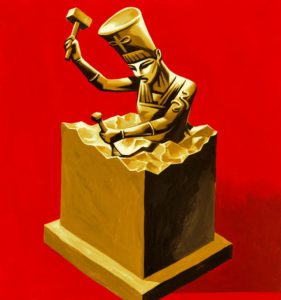
On Dec. 31, 1947, a celebrant at a New York nightclub overindulged. PHOTO: BETTMANN ARCHIVE/GETTY IMAGES
New Year’s Eve partygoers know three things: Somewhere fireworks are going off, somewhere a better party is going on, and somewhere there’s another serving of alcohol. After that, there’s the inevitable crashing headache in the morning. Dorothy Parker, one of the great tipplers of the 20th century, had it right: “A hangover is the wrath of grapes.”
The aforesaid grapes appear to have been in a nonstop rage from at least 7000 B.C., when the Chinese were crushing them in a recipe that included fermented rice and honey. Since then, the world’s greatest minds, sober and not, have been searching for a hangover cure, or at the very least a negotiated truce. Continue reading…






